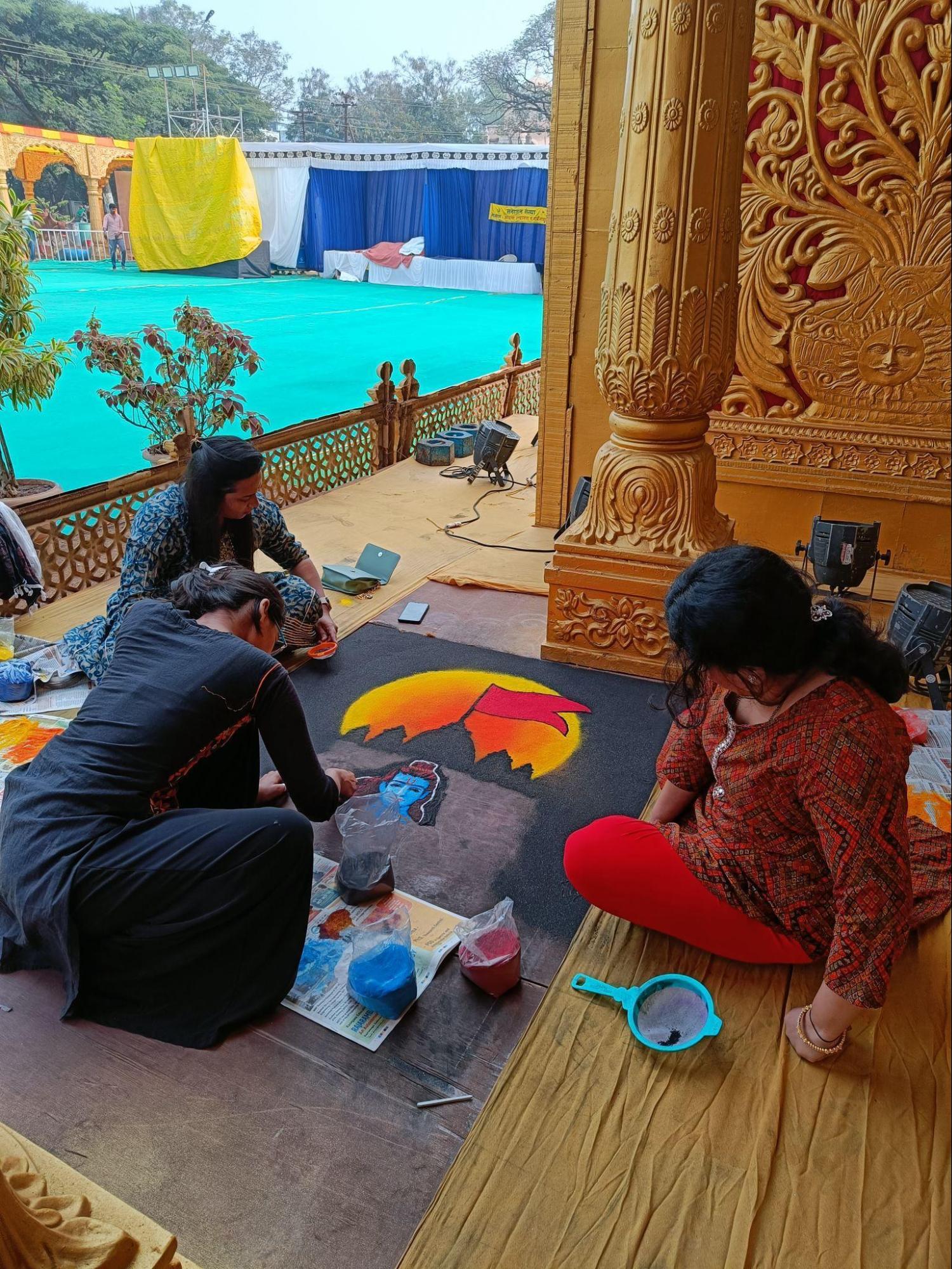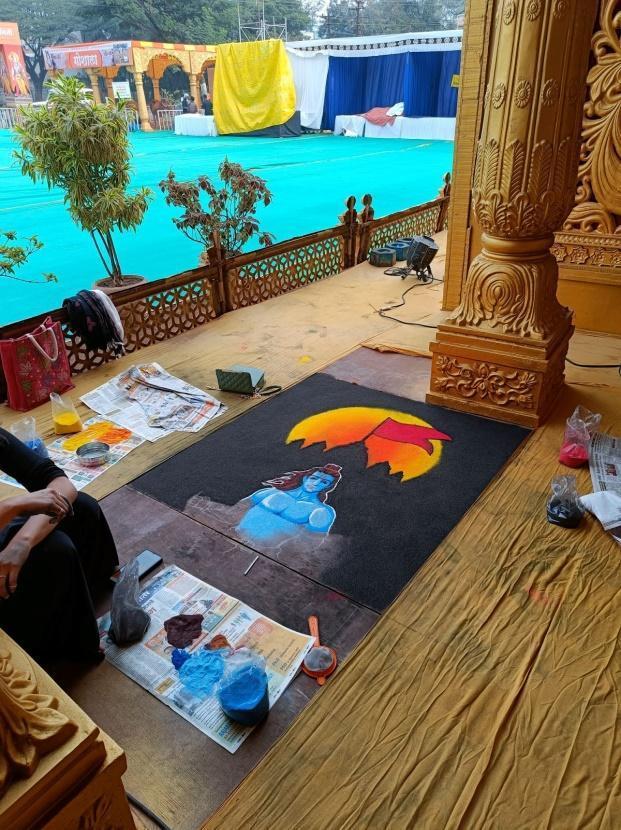SANGLI
Artforms
Last updated on 22 July 2025. Help us improve the information on this page by clicking on suggest edits or writing to us.
Craft of Sitar and Tanpura Making in Miraj
The Sitar and Tanpura are two classical instruments which are well-known in Indian musical tradition. They are perhaps among the oldest surviving stringed instruments still in use today. The art of making the sitar and tanpura is an intricate craft that has been perfected over generations.
![Tanpuras displayed at a workshop in Sitarmaker Galli, Miraj.[1]](/media/culture/images/maharashtra/sangli/artforms/tanpuras-displayed-at-a-workshop-in-sitarmake_1r5Robb.png)
The craft of sitar and tanpura making is meticulous; it involves carefully balancing both visual craftsmanship and acoustic precision. Skilled artisans create these instruments by meticulously considering each musician’s individual preferences for sound and design.
Across India, there are several clusters of craftsmen that one might find who specialise in the creation of these instruments. Perhaps one of the most renowned of these is located in a small lane called Sitarmaker Galli, in Miraj, Sangli district. Deepak Kumbhar, in his article, notes that this cluster “has been at the epicentre of a thriving musical tradition for the last 150 years,” recognised for its exceptional craftsmanship in producing sitars and tanpuras. He adds that “many of India’s top musicians, music bands, and orchestra artists get their musical equipment repaired, designed, and specially constructed by the legendary sitar-makers of Sitarmaker Galli.”
Notably, the instruments made by Miraj Musical Instruments Cluster and the Soultune Musical Instrument Producer firm from here have been awarded a Geographical Indication (GI) tag. This recognition, in many ways, points to the significance of the craft and its distinctiveness in the region.
![Craftsmen working together on a tanpura in Miraj, continuing a centuries-old tradition of musical instrument making.[2]](/media/culture/images/maharashtra/sangli/artforms/craftsmen-working-together-on-a-tanpura-in-mi_QomK4xX.png)
The tradition of instrument making in Miraj has a rich and fascinating history. Its rise as a prominent hub for sitar and tanpura making is strongly linked to the work of Faridsaheb Sitarmaker, whose innovations significantly shaped the local tradition. Faridsaheb was a member of the Shikalgars, a community of skilled metalsmiths originally involved in repairing arms and armour. During the 17th century, under the Bijapur Sultanate of the Adil Shahis, the Shikalgars settled in Miraj and continued their traditional work.
The craft of instrument making in Miraj evolved in response to significant historical changes in the region. As the Anglo-Maratha Wars concluded, Kumbhar mentions that the mechanisation of warfare led to decreased demand for traditional weaponry. This transition prompted the Shikalgar community to apply their metalworking and craftsmanship skills to new areas, including woodworking and the creation of household implements, which eventually led to instrument making.
During this time of change, simultaneously, Miraj was also experiencing a cultural renaissance under the patronage of the ruling Patwardhan dynasty. Shrimant Balasaheb Patwardhan II (1866-1939), a noted connoisseur of music. Patwardhan often invited performers from across the subcontinent and transformed Miraj into a significant centre for Hindustani classical music with particular influence on the development of the Kirana gharana. Renowned musicians, including Ustad Abdul Karim Khan, Pandit Vishnu Digambar Paluskar, and Sawai Gandharva, became associated with the town.
Faridsaheb Sitarmaker was deeply immersed in this musical culture. Attending local jalsas and mushairas, he developed an appreciation for music and took a keen interest in musical instruments. At the time, high-quality instruments were primarily made in North Indian cities like Jaipur, Gwalior, Varanasi, and Lucknow. Musicians visiting Miraj often faced difficulties in finding local craftsmen to repair their instruments. Faridsaheb took on this challenge, dedicating himself to learning the intricacies of instrument construction and acoustics.
His methodical approach to studying and repairing instruments led him to experiment with new materials available in Miraj. He observed that Hindu sadhus used gourds to make kamandalas and realised that these could serve as resonators for stringed instruments. With the help of his brother Moinuddin, he refined construction techniques, ensuring optimal sound quality. After years of trial and error, Faridsaheb perfected the acoustics of sitars and tanpuras, gaining recognition for his work on refining the ‘javari,’ a key element influencing the tonal quality of the strings.
His reputation grew, and musicians from across India travelled to Miraj, often waiting months for him to repair or craft their instruments. His legacy endures through the generations of artisans in Miraj, who continue to uphold the town’s status as a distinguished centre for musical instrument craftsmanship.
Rangoli
Rangoli is a traditional Indian folk art form created to mark auspicious occasions, festivals, and special events. It is characterised by intricate patterns and vibrant colours, often designed on the ground using a variety of materials. The practice is deeply rooted in cultural traditions and is widely observed across India.


In the district of Sangli, the tradition of creating rangoli is particularly prominent during Ganesh Utsav. During this time, large and intricate rangolis adorn the streets as processions from the Ganapati Mandir in Sangli and Tasgaon Ganpati Mandir take place. These rangolis are often created within minutes by skilled artists, with contributions from men, women, and children.
The process of creating a rangoli often begins with outlining a design on the floor using chalk, rice flour, or similar materials. These patterns are then filled with colored powders (gulal), flower petals, or other decorative elements. This process frequently involves teamwork, as families and communities come together to bring these beautiful artworks to life.
Creative Spaces in the District
Sangli State Museum
The Sangli State Museum is a cultural institution housed within the old palace built by Shrimant Appasaheb Patwardhan, the first ruler of the Sangli State. Established in 1954, the museum showcases a diverse collection of artefacts. Among the exhibits are woodwork, porcelain items, china pots, and an array of artworks, many of which were created under the patronage of the Patwardhan royal family.
![Entrance of the Sangli State Museum, Sangli City.[3]](/media/culture/images/maharashtra/sangli/artforms/entrance-of-the-sangli-state-museum-sangli-ci_7loBb0W.png)
In addition to its diverse exhibits, the museum offers informative lectures and film screenings periodically, along with guided services for visitors.
Vishnudas Bhave Natya Vidyamandir
The Vishnudas Bhave Natya Vidyamandir is a prominent cultural institution in Sangli, dedicated to theatre and the performing arts. Named after Vishnudas Bhave, a pioneering figure in Marathi theatre, the institution serves as a centre for acting, directing, and traditional as well as contemporary performances. The institute frequently organises workshops, plays, and cultural events.
![Vishnudas Bhave Natya Vidyamandir in Sangli.[4]](/media/culture/images/maharashtra/sangli/artforms/vishnudas-bhave-natya-vidyamandir-in-sangli4-dcc0d0aa.jpg)
Artists
Bal Gandharva
Narayan Shripad Ranjhas, popularly known as Bal Gandharva (1886–1967), was born in Nagthane village, Palus taluka in Sangli district. He was a renowned figure in Indian theatre, particularly celebrated for his contributions to Marathi drama and music. His exceptional talent and innovative approach to acting and singing made him one of the most beloved and influential artists in the history of Marathi theatre.
![Bal Gandharva[5]](/media/culture/images/maharashtra/sangli/artforms/bal-gandharva5-6541bea8.png)
His journey in the performing arts began early, with initial training in music from his father, Shripad Rajhans, who was a classical singer himself. His breakthrough came in the early 20th century when he joined the Kirloskar Natak Mandali, one of Maharashtra’s leading theatre groups. His performances captivated audiences through a unique combination of expressive singing, nuanced acting, and graceful movements.
One of Bal Gandharva’s most notable contributions was his portrayal of female characters. His ability to embody femininity with remarkable grace and emotional depth earned him widespread acclaim. Throughout his career, Bal Gandharva received various accolades for his work in theatre and music. His performances in Marathi theatre and his influence on the development of Indian classical music have had a lasting impact on the artistic landscape of Maharashtra.
Vishnu Sakharam Khandekar
Vishnu Sakharam Khandekar was a renowned Marathi novelist, short-story writer, essayist, and critic. His literary career began in 1919, and he published works under various pseudonyms, including ‘Kumar’ for poetry and ‘Adarsh’ for humorous articles. While working as a teacher, Khandekar created a rich body of Marathi literature in various forms during his leisure time.
![Vishnu Khandekar[6]](/media/culture/images/maharashtra/sangli/artforms/vishnu-khandekar6-4b406a6d.png)
His diverse legacy includes 15 novels, 31 short story collections, 10 collections of short essays, 6 collections of allegorical stories, one drama, and several biographical and critical works, along with 18 screenplays for Marathi, Hindi, and Telugu films. In recognition of his contributions, the Government of India awarded him the Padma Bhushan in 1968. Khandekar was also the first Marathi author to receive the prestigious Jnanpith Award for his novel ‘Yayati’ in 1974, which also earned him the Maharashtra State Award and the Sahitya Akademi Award, both in 1960.
Sources
Deepak Bhau Kumbhar. n.d. String Masters: Sitarmakers of Miraj. Sahapediahttps://www.sahapedia.org/string-masters-sit…
Hello Travel. Sangli State Museum.https://www.hellotravel.com/india/sangli-sta…
Maharashtra State Gazetteers. 1969. Sangli District.Directorate of Government Printing, Stationary & Publications, Government of Maharashtra, Mumbai.
My Mahanagar. 2021. “Novelist Vishnu Sakharam Khandekar.”https://www.mymahanagar.com/editorial/daily-…
The Week. 2024. Sitars, Tanpuras Made in Maharashtra’s Miraj Town Get GI Tags. The Week, India.https://www.theweek.in/news/india/2024/04/07…
Last updated on 22 July 2025. Help us improve the information on this page by clicking on suggest edits or writing to us.